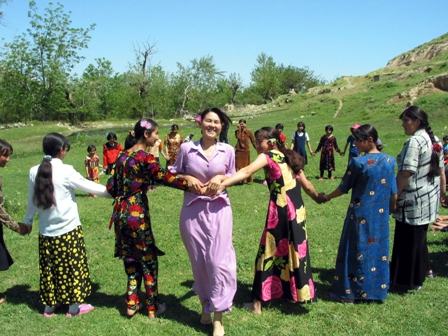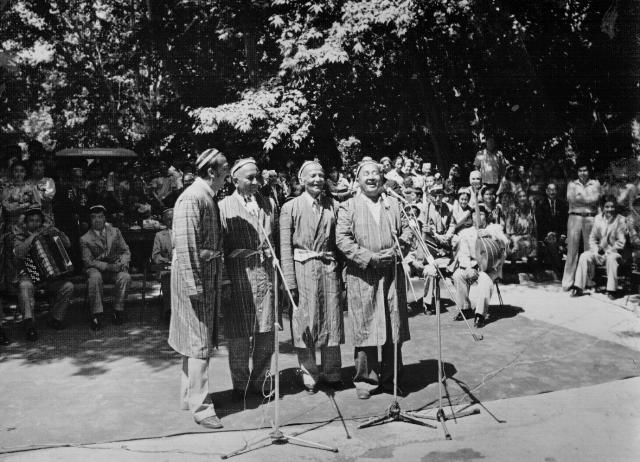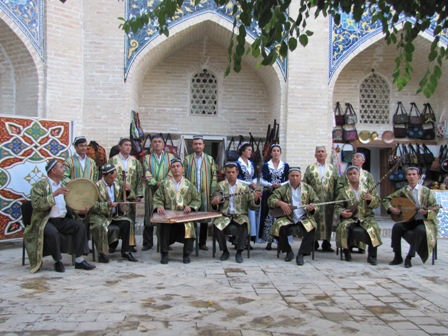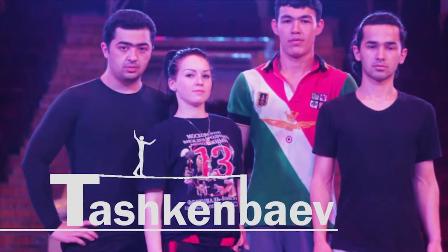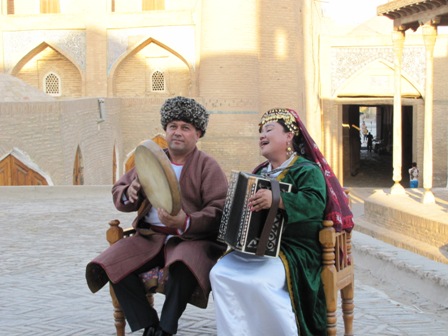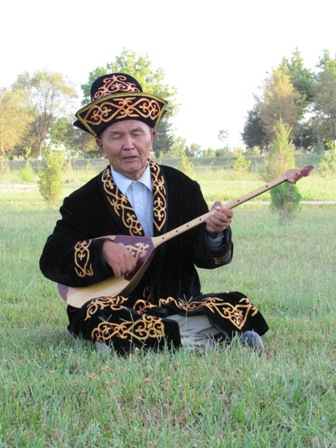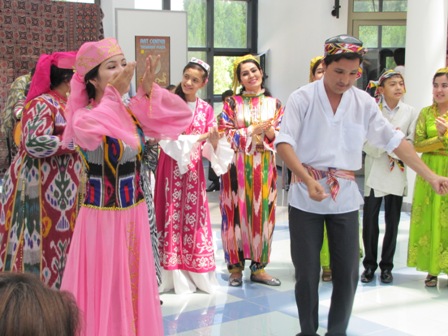Legends and Stories
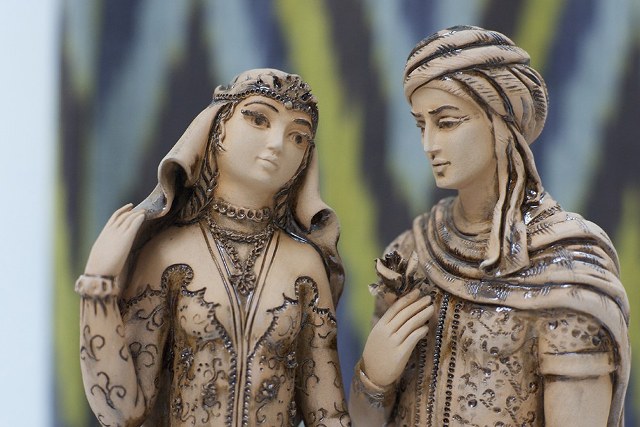
Domain: Oral Traditions and Expressions
Index Number: 01.01
Legend is a verbal story, which is transmitted from generation to generation and is mixed with magic, sorcery and dreams. It is one of the examples of intangible cultural heritage. Legend, being one of the most ancient genres of oral folk art of Uzbeks, narrates about events and occurrences, in which notions aimed at understanding and perceiving reality based on artistic storyline, are embodied. For this reason, in legend it is possible to find brief information about social life, people's worldviews, traditions and customs and historical events.
The information about legends can be found in the famous work of Mahmud al-Kashgari, "Diwanu l-Lugat al-Turk", and is given with the help of the word of "sav", which is defined as "narration" or "story".
Since no traditional features are observed in legend's text, the development of events is not so complicated in it. For that reason, thanks to the skill of narrator, events change constantly. As a rule legend's storylines incorporate mythological events as well as miraculous occurrences, which are associated with certain geographical names. And it is typical that they consist of two or more episodes. The events in a storyline, in most cases, begin with an entanglement, which brings the listeners inside the events.
In legends it is not possible to find usual beginning and end parts, the features, which are typical for tales. This is partly explained by the absence of professional performers dealing with narration of legends. As such a conclusion can be made that legend represents the genre, which is performed by people at large (i.e. the person, who knows it, performs it in the way and in the form he knows).
The themes covered by legends are diverse. These can be miraculous deeds of sky, earth and water patrons, frequent clashes between good and bad spirits, emergence of human being on earth, reasons for appearance of signs relating to certain items and events, wonderful and magic events associated with taboo, etc.
Legends, with their descriptions of supernatural events and occurrences resemble tales. Though, lack of steady form and laconism make them distinct. Thus, in legends there is no commonly established storyline and design. And this feature is closely linked to the fact that they are performed by many ordinary people and as such, fulfill a simple function of providing information.
Indeed, in many episodes of legends it is possible to find handling of the issues associated with Zoroastrism. Mythological legends, such as "Qayumars", "Odami Od", "Er Khubbi", "Anbar ona", "Hazrati Khizr", emerged as a result of religious beliefs which got formed based on primeval worldviews, worshiping to certain items that seemed to be mysterious, etc.
In terms of ideas and themes covered, legends conditionally can be divided into mythological ones and those, which are created based on historical events and occurrences. And each of these, in turn, can be divided into smaller groups.
From among Uzbek folk legends significant place is occupied by the ones, which narrate about historical events and occurrences. These are legends of "Devqala"', "Shirin qiz", "Kaltaminor", "Ilon buzgan", which glorify inimitable beauty and strength of the humankind.
Such legends as "Baroqtom", "Shohsanam and Gharib", "Hazorasp", "Iskandar va Afrosiyob" are associated with historical places and the names of historical personalities. The events described in them have fantastic features. The legends of this kind often deal with a certain event, tribe or clan, or geographical units (for example strongholds, mausoleums, fortifications, castles, minarets, rivers, seas, cities), tell about the reasons of their emergence and destruction, explain the history of appearance of certain name. One example of this is the legend of "Hazorasp".
Notably, in different years various examples of Uzbek folk legends were documented. These are nowadays are kept in folklore archives.

Story is a narration, which is done verbally. In terms of origin and historical roots it is considered one of the examples of ancient folklore and as such represents an element of intangible cultural heritage. It is a work of small size without commonly established form, which describes certain historical occurrence (that took place in the past) or past event by means of artistic fiction.
Stories do not have established forms and styles which are observed in tales and eposes (dostons). As such, anyone can narrate it and they do not require special performers. Usually stories, which began from one narrator, in the process of transfer by word of mouth were interpreted freely. And exactly this factor brightly demonstrates one of the typical features of the oral art – existence of variance.
In legends and stories historical reality is presented in the guise of fiction. Both of them, in terms of form, close to fairytales. Although stories bear similarities to legends, there are also some differences between the two. In contrast to legends, in stories dominate historicity. By contrast, legends unlike stories are rich in fantastic features and religious elements. Stories about Tomyris and Shiroq could serve as examples here.
Stories are diverse from the perspective of ideas and themes used. They, as a rule, have a condensed storyline, consist of realities that incorporate two or three episodes, and do not have established and strict design. Therefore the events of storyline, in the majority of cases, look like incomplete, and there is a feeling that they have their logical continuation. And it appears to the listener that they are only fragments, which were taken from a much bigger work.
In stories one tells about events, which are associated with historical occurrences and personalities, lives of peoples, emergence and disappearance of geographical units (mountains, seas, lakes, steppes, deserts, cities, settlements, strongholds, castles, etc.). Along with these stories tell about certain event and acknowledge it. It is in them that national and universal human values are glorified, such ideas as humanism, good deeds and kindness are contrasted with such vises as cruelty, evil and misdeeds.
Based on the themes used, stories can be divided into historical ones and toponymical ones.
Historical stories, while reflecting the events associated with the activity of certain personalities or folk heroes, advocate the ideal standards of ethics and good manners. Historical stories about such personalities as Tomyris, Shiroq, Alisher Navoi, Ulughbek, Ibn Sino and Beruni may serve as examples here.
It could be told that historical stories emerged based on memories of a certain personality or memories of the witnesses of events. And exactly this feature makes this story genre original. Though, in some historical stories nothing could be found about real events with only the name of the personality remaining intact. Sometimes, narration goes about historical personalities within the framework of "wandering" storyline. Despite all of the above-mentioned, presence of historical personality, existence of artistic fiction in the storyline makes it possible to call such works as historical stories.
In toponymical stories one tells about the names of cities, settlements, castles and mausoleums, about the reasons of their emergence. At the end of toponymical stories, as a rule, main aim is explained, and certain fact is provided (for example, "Mausoleum of Torabek Khonim", "Anda jon qildi", "Odinajonim", "Qonghirot", etc.).
Stories, being examples of oral art, reached us mainly in oral, and partly, in written form. Ancient examples of stories can be found in such works as "History" (written by Herodotus), "Badoe ul vaqoe" (by Vasifi), "Makorim ul-Ahloq" (by Khondamir), etc. To date many stories have been documented in Uzbekistan, which serve as important sources in studying the history of nation, its cultural and aesthetic views. At present many documented examples of Uzbek folk stories are kept in folklore archives.





